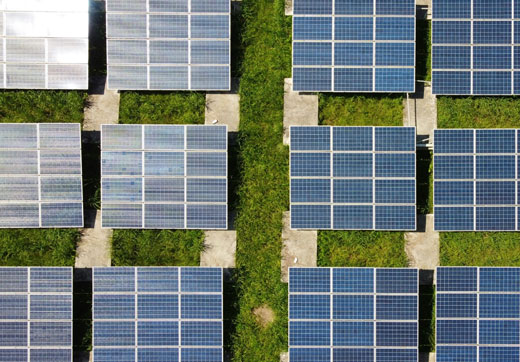
Carbon Graphite: Sustainability and Green Manufacturing Practices
At Semco, we pay close attention to developments in synthetic graphite production, not just because we machine graphite components daily, but because our customers increasingly ask about sustainability. The truth is, graphite manufacturing has never been particularly "green." Synthetic graphite production consumes enormous amounts of energy, and the recycling of graphite has historically lagged behind other materials. As we’ve written about in a previous blog, we were called in to extract large graphite electrodes that had been disposed of in an Iowa cornfield. Yet we're seeing real changes in how graphite gets made and how it's being recovered and reused. At the same time, graphite enables some of the cleanest manufacturing processes available today. There is even more progress on the horizon. Something us graphite nerds at Semco have been following recently is research into biomass conversion—turning organic materials into graphite. This process could add another page to graphite sustainability profile, though this technology remains mostly in development. We’ll use this blog to better understand both sides of this story: graphite’s dirty past, and its greener future.
Cleaning Up Graphite Production
Let's be honest, making synthetic graphite has always been energy-intensive. The graphitization process requires temperatures approaching 5,000°F maintained for days or even weeks. As you can imagine, that takes a lot of electricity, and historically, as you know, much of that electricity came from burning fossil fuels. The carbon footprint of producing graphite has been substantial.
The industry is changing, though. Some graphite producers are switching to renewable energy sources for their facilities, directly reducing emissions from production. Others are redesigning furnaces to use less energy and capture waste heat for reuse elsewhere in their operations. These aren't revolutionary changes, but they're real improvements that reduce the environmental impact of each ton of graphite produced.
The recycling of graphite represents perhaps the most significant recent development. As the first wave of electric vehicle batteries reaches end-of-life, companies are developing processes to recover and reprocess the graphite anodes. This recycled material can be purified and returned to use, reducing demand for virgin graphite production. The technology continues improving, with higher recovery rates and better purity levels making recycled graphite increasingly viable for reuse in other applications, or put back into the next generation of electric vehicle batteries.
Research into biomass conversion offers an intriguing future possibility. Instead of starting with petroleum coke, this approach would transform plant materials and agricultural waste into graphite. The technology is still largely experimental, but if it becomes commercially viable, it could provide a much lower-carbon pathway to graphite production.
How Graphite Enables Cleaner Manufacturing
For all the environmental challenges of making graphite, the material plays crucial roles in some of the cleanest industrial processes available. We know this firsthand. At Semco, many of our customers use graphite components in industries that are actively working to reduce their carbon footprints.
Electric arc furnace steelmaking provides a clear example. Steel production will never be completely clean—it's an inherently energy-intensive process. But electric arc furnaces using graphite electrodes are far cleaner than traditional blast furnaces. These furnaces can melt scrap steel, recycling existing material rather than producing new steel from iron ore. The process avoids the massive carbon emissions associated with blast furnace operations. Graphite's electrical conductivity makes this recycling approach both efficient and economical.
Solar panel manufacturing depends on graphite components. Producing the ultra-pure silicon wafers that convert sunlight to electricity requires graphite crucibles, heating elements, and insulation to maintain precise high-temperature conditions. Without reliable graphite components, manufacturing affordable solar panels would be significantly more difficult. The irony isn't lost on us—an energy-intensive material enabling the production of clean energy technology.
Battery production for electric vehicles is probably the most visible place where graphite intersects with green technology. The graphite anodes in lithium-ion batteries make reliable energy storage possible. Yes, producing these batteries has environmental costs. But the emissions avoided by replacing gasoline-powered vehicles with electric ones quickly outweigh the manufacturing impact. As battery recycling improves and synthetic graphite production becomes cleaner, this equation only gets better.
Real Progress in a Complex Industry
We won't pretend that graphite manufacturing has become perfectly sustainable—it hasn't. The industries using our graphite components, from steel to batteries, still generate significant emissions even as they improve. But the progress is real, not just marketing talk.
At Semco Carbon, we see our role as staying informed about these developments so we can serve our customers better. As the recycling of graphite becomes more sophisticated and biomass conversion moves from research to reality, the graphite supply chain will continue to change. Our job is to understand these changes and help our customers navigate them. The path to truly sustainable manufacturing is long, but graphite—for all its production challenges—remains essential to getting there.
